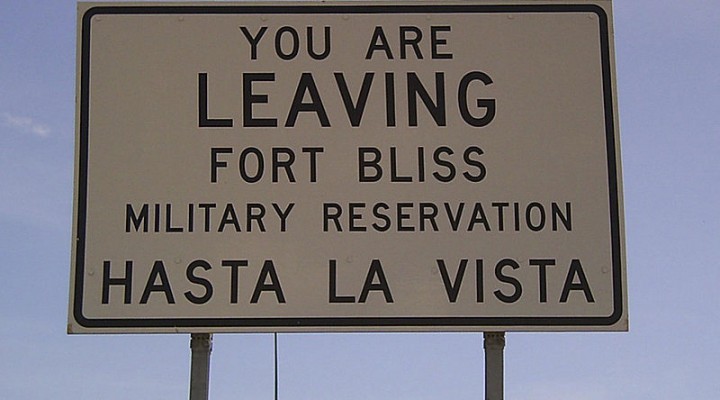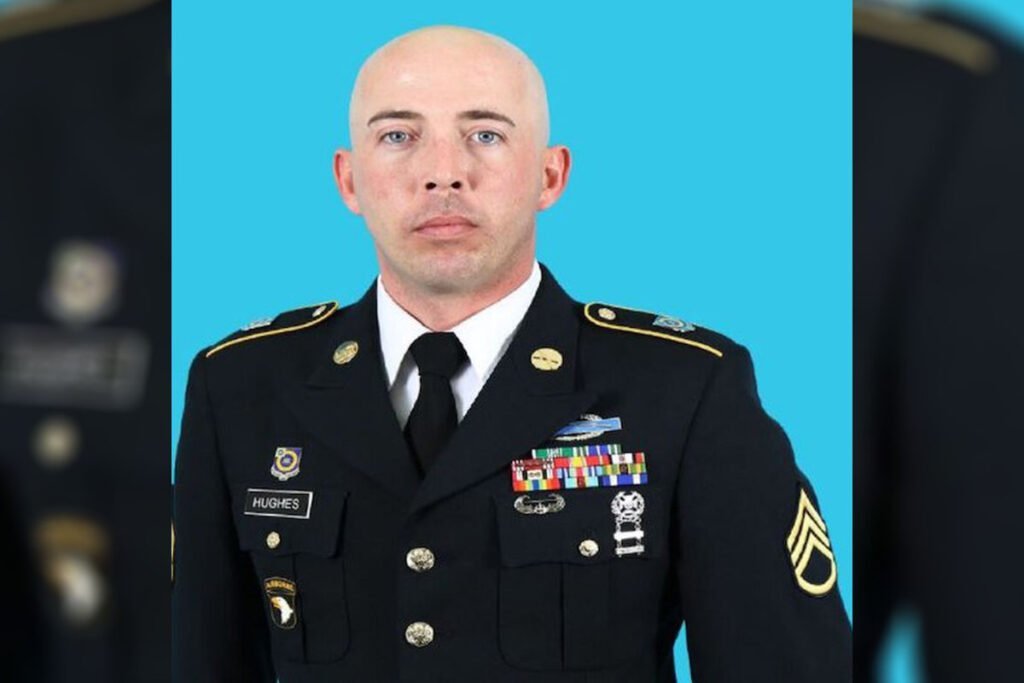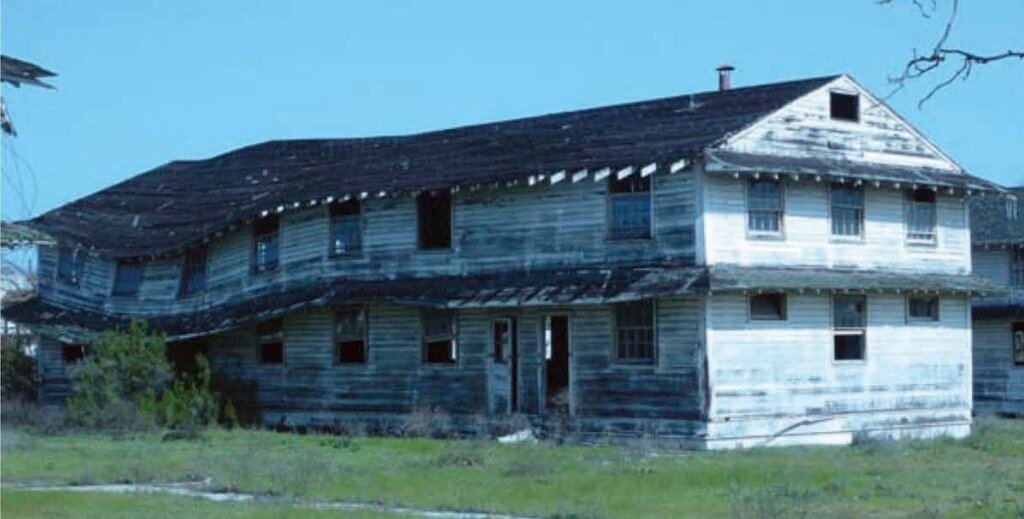Military Bases Housing Migrant Children Plagued by Serial Sexual Abuse Claims

The Biden administration is now housing unaccompanied migrant children on military bases in Texas and California. Some of these bases have been plagued for years by record sexual abuse claims, one with the highest in the nation. All of them suffer from dangerous environmental contamination.
Over the first few months of 2021, the migrant crisis at the US-Mexico border has exploded. Due to the policies of the Obama, Trump and now Biden administrations, many of those migrants, particularly unaccompanied minors, remain housed in increasingly controversial “overflow facilities.”
Despite promises to reverse the policy, the Biden administration instead has taken the unprecedented step of now housing thousands of these unaccompanied minors on US military bases, a jolting move that hardly generated any attention from either the mainstream or independent media. This is true even for left-leaning outlets that spent much of the Trump era railing against and calling for the closure of these detention facilities as well as the increasing militarization of the US-Mexico border. The only exceptions have been those few outlets that covered the dangerous environmental contamination present at some of the bases now involved.
Currently, unaccompanied minors are being housed at two military bases in Texas and one in California. While there was media coverage of the decision to house children and teens at these bases, there was little journalistic interest in looking deeper into the issues of these particular bases, some of which are known for extremely unsanitary conditions or for allowing “serial rapists” to serve on base for years despite numerous reports about their crimes to base leadership. One of these bases has the highest rate of sexual assaults out of any joint base in the entire Department of Defense.
Not only that, but the US military’s computer network has consistently ranked among the top internet service providers for the trafficking of child pornography, further underscoring why military bases, particularly these military bases, are unsuitable for children.
Also concerning is the fact that US officials refuse to say how many children are being sent to these bases. HHS currently has more than 13,000 kids in their custody. That number is only projected to grow, with Customs and Border Protection now projecting that 184,000 unaccompanied minors could end up in government custody by this time next year.
In addition, these bases have not yet released photos of where the minors are kept and have even banned soldiers on these bases from photographing the areas where the children are being held. The tents they are housed in are said to be able to house 1,000 people each, implying that each base has received thousands of migrant children in recent weeks.
In recent years, prior to the current spike in the severity of the border crisis, thousands of migrant children that were placed into this system of “overflow facilities” and detention centers have been “lost” by the government and some have reported acts of physical and sexual abuse inside these facilities. These children’s reunification with their families can take months or years and, for many, it doesn’t happen at all. Now, with the opening up of these specific military bases to these unaccompanied children, it seems clear that these new, military-run enclosures are likely to be even more unsafe and are hardly a solution to the current situation on the US’ Southern border.
The Texas Bases: Fort Bliss and Joint Base San Antonio

Texas’ Fort Bliss and Joint Base Sant Antonio have both become notorious for their disturbing and frequent sexual abuse claims, overshadowed only by another Texas military base – Fort Hood. In 2017, a Pentagon study found that Joint Base San Antonio had the highest rate of sexual assault reports out of all the other joint base installations in the entire Department of Defense, registering 881 cases from 2013 to 2017. Before that period, Lackland Air Force Base, part of Joint Base San Antonio, saw 62 cadets allege that more than 30 training instructors on the base had sexually abused them in some way. The figures at the base are likely much higher given that most sexual abuse cases go unreported in the Armed Forces, with media reporting in 2014 that only 3,300 reports were filed out of a total of 26,000 reported instances of unwanted sexual contact or sexual abuse that year.
In the case of Fort Bliss, the base has counted among its ranks particularly egregious sexual criminals who were known to base leadership for years and were allowed to continue to prey on other soldiers, their spouses and even their own children. In just the first few months of 2021, there have been two deeply disturbing cases surrounding Fort Bliss that were recently prosecuted. The first was made public with the January arrest of Pfc. Christian Alvarado on three allegations of sexual assault as well as charges of aggravated assault and making false statements to military investigators. One of Alvarado’s alleged victims was Pfc. Asia Graham, who was found dead in her barracks room nearly a year to the day that Alvarado had raped her. Her manner of death has not been disclosed by Fort Bliss.
The second is even more disturbing and provides a clear example of how Fort Bliss leadership have turned a blind eye to sexual abuse of both adults and children for decades. Just last week, Army Staff Sgt. Randall Hughes was sentenced for multiple rapes and sexual assaults, including the rape of his own daughter last year. Troublingly, it wasn’t until Hughes’ daughter, who was 16 at the time, reported her father for drugging and then raping her that Army leadership began to scrutinize the lengthy record of rape accusations against him that date back to 2006.
One of the claims involved the wife of a soldier under Hughes’ charge, who was raped by Hughes in her own house after he got her husband so drunk that he passed out. That particular accusation against Hughes was investigated, but Hughes was not prosecuted and instead had a General Officer Memorandum of Reprimand added to his personnel file. The victim later told the Army Times that “I was told CID [the Army’s Criminal Investigative Division] had enough evidence to believe it happened, and Fort Bliss still didn’t do anything. They just told me the command said this is what it was — this is how it is.”
After violently raping his then-girlfriend and cutting her with a broken bottle, Hughes moved to a different base in New Jersey after gaining custody of his teen daughter while at Fort Bliss. Thus, Fort Bliss leadership had shockingly allowed Hughes to bring a minor on base to live with him despite his history of violent sexual assaults. In March 2020, he would drug and rape his daughter, Lesley Madsen, later pleading guilty to the sexual abuse and assault of a child. The leadership at New Jersey’s Fort Dix took action against Hughes and prevented him from preying on others, unlike the leadership of Fort Bliss, whose inaction led to the horrific assault of Hughes’ young teen daughter.
In addition to their disturbing track record with both high rates of abuse claims and a “cover-up” culture, both of these bases are also known to be contaminated with dangerous pollutants and chemicals that put the lives of soldiers, and now minors, at risk. In the case of Fort Bliss, the base’s history of contamination with cancer-causing compounds is well-documented and has been home to at least 80 toxic sites over the course of its operation. Even the sites at the base that have now been deemed safe by the Environmental Protection Agency (EPA) continue to be dangerous, with one “cleaned” site found to contain more than 19 times the legal limit of arsenic in its soil.
At Joint Base San Antonio, the water is heavily contaminated due to chemicals from toxic firefighting foam that has been used on base for decades. In addition, as some journalists and environmental watchdogs have noted, Joint Base San Antonio has some of the worst air pollution in the entire United States.
Camp Roberts

After migrant children began to be sent to the bases in Texas, the Pentagon announced on April 3 that California’s Camp Roberts had been approved to house unaccompanied migrant children. While not known for high rates of sex crimes like the Texas bases, Camp Roberts has long had major sanitary and environmental issues much like Fort Bliss and Joint Base San Antonio.
According to reports from Camp Roberts itself, raw sewage can be seen routinely bubbling up from different buildings at the base, with others lacking any sort of heat or air conditioning on a regular basis. In 2011, conditions were so bad on base that Sgt. Dustin Shepard, the noncommissioned officer in charge of camp operations, told his superiors in an email that he was “completely disgusted with the lack of soldier care” that had stemmed from “decades of deferred maintenance and neglect” according to an investigation published that same year by the Sacramento Bee.
Despite efforts to renovate the camp, rodent infestations are commonly reported and the electrical wiring present in several buildings has been called unreliable and, in some cases, unsafe by the camp’s commander. Camp leadership have since worked to dismiss allegations that the base is “overrun by mice” and “saturated by raw sewage.” In addition, hundreds of long-condemned structures are located throughout Camp Roberts, with signs warning of their contamination with lead, asbestos and hantavirus, an airborne and often deadly disease carried by rodents. In 2018, the government of California accused the camp of improperly disposing of hazardous waste.
Currently, the Environmental Protection Agency (EPA) lists the entirety of Camp Roberts among its active “Superfund” sites that are deemed by the government to be the most contaminated in the country and in need of urgent, and often expensive, cleanup efforts. Camp Roberts is an active Superfund site, but is no longer on the National Priority List of Superfund sites. The EPA website offers little information about the reasons for the base being listed as a Superfund site, declining to provide relevant reports or lists of contaminants known to be present on its grounds.
Why Are We Trusting these Bases with Vulnerable Children?
It goes without saying that these three military bases are even more unsuitable to house children and teens than the detention facilities that have been used to house them under the last three presidential administrations. With the minors living outside these bases in tents, the environmental contamination and sanitary crises present on these bases pose a direct hazard to their health, especially in the case of Camp Roberts. In the case of the Texas bases, a culture that turns a blind eye to violent rapists for over a decade and a reputation for extremely high rates of sex crimes make it abundantly clear that vulnerable minors separated from their parents or guardians should not be housed there.
Particularly concerning is the assertion made by Fort Bliss leadership when they dismissed Randall Hughes’ horrific sex crimes because “this is how it is”. If Hughes’ ghastly behavior, which later included the rape of a minor, was deemed as such by Fort Bliss leadership, how can those same authorities be trusted with the safety and well-being of thousands of unaccompanied and vulnerable children?
 TheAltWorld
TheAltWorld 
0 thoughts on “Military Bases Housing Migrant Children Plagued by Serial Sexual Abuse Claims”